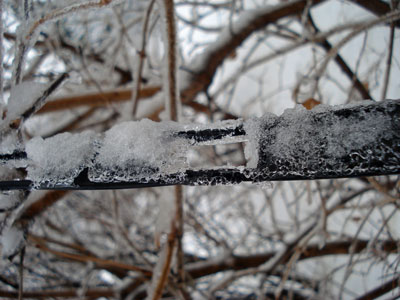Sample:
Welcome to Handiham World.

February mid-winter sanity check!
I see from the DX Cluster that the bands are in good shape. Some of my friends are working the ARRL Centennial QSO Party stations and the rare DX like Amsterdam Island. Hopefully you are able to use your radios to have fun on the air as we continue to slog and trudge through winter. Aside from keeping ice off the ladderline, there isn't much one can do up here on the frozen tundra with outdoor ham radio activities, but fortunately there is plenty to do indoors when the HF bands are this good.
Are you an HF newbie? If so, you'll want to learn which bands are open and when. Why not start by paying a visit to the Hamuniverse.com "What to expect from the HF bands" page? It gives a concise band by band explanation of what to expect. Learn about HF nets by participating in them. The way to begin is by listening. Tune across the bands and find nets that way, which can add to the fun of discovery. Remember that some bands are most active in the hours of darkness while others are likely to be open by day.
Some HF nets have supporting websites that share information about net hours, frequencies, net control stations, and net purpose or mission. One of my favorite nets is the PICONET, which is a 75 meter semi-formal net that is mostly just a social net but that also occasionally handles formal NTS message traffic. Because it is on 3.925 MHz, it is considered a "regional" net. You need to be in the vicinity of Minnesota, Iowa, Wisconsin, and the Dakotas to reliably participate. Fortunately you can do so via the two Handiham remote base HF stations if you have station control op credentials.